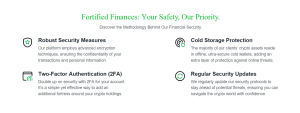Running a family business comes with its unique challenges—balancing family dynamics, managing operations, and, often, wearing many hats at once. As your business grows or scales, staying organized, managing communications, and keeping track of day-to-day tasks can become overwhelming. This is where an executive assistant (EA) can step in, providing invaluable support to help streamline operations, keep everything organized, and ensure you’re focusing on what truly matters.
Finding the right executive assistant for family offices can be a game-changer for a small or scaling family business. It’s not just about someone answering emails or handling scheduling—it’s about finding a trusted partner who can help with organization, planning, and communication, freeing you up to focus on high-level tasks. But where do you begin, and what qualities should you look for in a candidate? Let’s dive in.
Why You Need an Executive Assistant for Your Family Business
An executive assistant isn’t just a “right-hand” person—they are essential to keeping your business running smoothly. According to a study by Salary.com, the role of an executive assistant is expected to grow by 10% over the next decade, as businesses continue to recognize the importance of organizational support. For small businesses and family-owned companies, an executive assistant can be the difference between feeling overwhelmed and having the capacity to grow.
Here are a few ways an executive assistant can benefit your family business:
- Organization: They can handle the day-to-day logistics—organizing documents, managing calendars, and keeping track of important business decisions, so you don’t have to.
- Communication: They can serve as a point of contact for internal teams or external clients, ensuring that communication flows smoothly and efficiently.
- Time Management: With their help, you’ll be able to focus on the tasks that matter most while delegating the more mundane but essential activities, such as booking appointments or managing travel plans.
1. Clarify What You Need
Before diving into the hiring process, it’s important to define what you’re looking for in an executive assistant. Does your business need help with organization and scheduling? Are you looking for someone to handle sensitive client communications? Or, perhaps, you need someone to manage projects and ensure deadlines are met.
For small family businesses, the role of an executive assistant can vary significantly depending on your needs. Some family businesses require someone with a broad skill set who can wear many hats, while others might need a more specialized assistant focused on a specific area like scheduling or bookkeeping.
Questions to consider when defining the role:
- What are the most time-consuming tasks in your day-to-day operations?
- What are the top priorities for your business at this stage of growth?
- Do you need someone to handle sensitive family dynamics, or will this be more of an operational role?
By being clear about your expectations, you’ll have a better chance of finding someone who is not only qualified but also a good fit for your company’s culture.
2. Look for Skills That Match Your Needs
The ideal executive assistant for a small or scaling business should possess a combination of hard and soft skills. Some of the key skills to look for include:
- Strong organizational abilities: They should be able to keep multiple tasks and projects on track at the same time.
- Proven experience with time management and scheduling: If you’re constantly juggling meetings or appointments, they should have experience with calendar management and scheduling tools like Google Calendar or Outlook.
- Communication skills: Your EA will be communicating on your behalf, so they should be excellent at written and verbal communication, ensuring all correspondence is professional and clear.
- Tech-savvy: A modern EA should be comfortable with digital tools—project management software, file-sharing platforms, and communication tools (like Slack or Zoom).
- Discretion and confidentiality: Working in a family business often involves sensitive information. Your EA should be trustworthy and able to handle confidential matters with care.
According to a 2019 study by the International Association of Administrative Professionals, the ability to anticipate needs and stay one step ahead is one of the most important traits of a successful executive assistant. This skill is especially crucial in small businesses where many tasks are fluid, and priorities can shift quickly.
3. Look in the Right Places
Finding an executive assistant for a small business often requires thinking outside the box. Traditional job boards like LinkedIn or Indeed can be useful, but you might want to explore other avenues where you can find candidates who are more aligned with your business needs.
Here are a few places to consider:
- Personal Networks: Since you’re running a family business, networking within your circle of trusted professionals can be a great way to find reliable candidates. Word of mouth often leads to finding trustworthy assistants who understand the dynamics of working with a small, family-run business.
- Industry-Specific Job Boards: Websites like We Work Remotely or Glassdoor often have job boards specific to virtual or executive assistant roles.
- Recruitment Agencies: If you’re struggling to find the right fit on your own, a specialized recruitment agency can help. Some agencies specialize in executive assistants and can find candidates based on your specific needs.
- Freelance Platforms: If you only need part-time help or a remote assistant, freelance platforms like Upwork or Fiverr allow you to hire people with the exact skill set you need for short-term or project-based work.
4. Evaluate Cultural Fit
For a family business, finding an executive assistant who meshes well with your company culture, or vibe, is critical. Family businesses often have unique dynamics, so it’s important that your EA not only fits the technical qualifications but also understands how to navigate the interpersonal aspects of the business.
Tips for evaluating cultural fit:
- Ask how they’ve handled challenging family dynamics in previous roles or ask for examples of working with small teams.
- Understand their approach to managing multiple bosses (i.e., family members) with different priorities.
- Consider giving them a trial period to gauge how they handle day-to-day tasks and whether they can adapt to your specific needs and family dynamics.
5. Offer Competitive Compensation
Although executive assistants are vital to the success of small businesses, family-owned companies may not have the same budgets as large corporations. However, offering a competitive salary, flexible hours, and benefits can go a long way in attracting top talent.
Consider these factors when setting a salary:
- Industry standards: Research salaries in your area and for your specific business size.
- Experience level: More experienced executive assistants will likely require a higher salary, but they may offer more value through their skills and ability to handle complex tasks.
- Benefits and perks: Offering flexible work arrangements, health benefits, or opportunities for professional development can make the position more attractive.
Conclusion
Hiring an executive assistant for your family business can make a world of difference in improving organization, streamlining communication, and allowing you to focus on the bigger picture. By clearly defining the role, seeking candidates with the right skills, and ensuring cultural fit, you can find the perfect EA to support your growing business. The right person will not only manage tasks effectively but will also help your business run smoothly, leaving you with more time to focus on what really matters—taking your business to the next level.



















 Bitcoin
Bitcoin  Ethereum
Ethereum  Tether
Tether  XRP
XRP  USDC
USDC  Solana
Solana  TRON
TRON  Lido Staked Ether
Lido Staked Ether  Cardano
Cardano  Avalanche
Avalanche  Toncoin
Toncoin